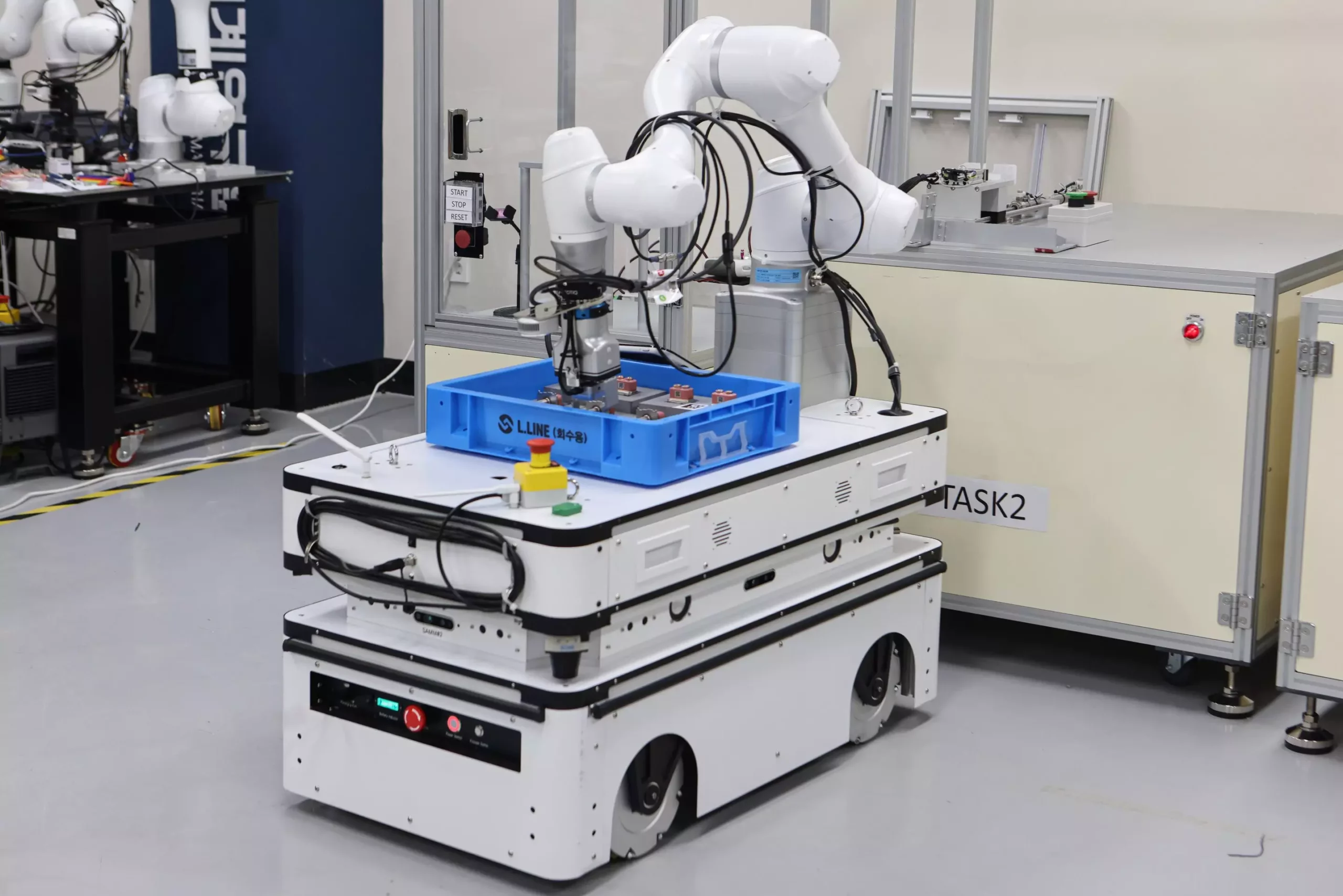In a groundbreaking development, an AI (artificial intelligence) technology for robot work has been created, revolutionizing the manufacturing industry. This pioneering technology, developed by the Korea Institute of Machinery and Materials (KIMM), is set to transform the way robots are applied in manufacturing processes. It opens up new possibilities for the manufacturing of automobiles, machine parts, assembly, and production. With its ability to improve the working environment, this innovation is poised to reshape the future of manufacturing.
The AI technology for robot work at manufacturing sites is built upon the foundation of the “Large Language Model (LLM)” and a virtual environment. This cutting-edge technology enables robots to understand user commands, generate task sequences, and execute them autonomously. Voice or text can be used to automatically generate task sequences and movements, streamlining the manufacturing process. Additionally, the technology allows for the selection of the optimal work point through pre-learning in a virtual space. It goes further by minimizing the work process and detecting objects to prevent collisions.
Traditionally, the use of robots in manufacturing has been constrained by the need to modify the work environment to accommodate the robot. This limitation severely restricted the range of tasks that robots could perform. However, with this new AI technology, the tables are turning. By specifying the task to be performed by the robot, on-site modifications are minimized. Furthermore, pre-learning in a virtual space equips the robot with the capability to effortlessly perform tasks at manufacturing sites, eliminating laborious and time-consuming modifications.
The integration of AI technologies, such as LLM, with robotics has ushered in a new era of possibilities. These powerful combinations have the potential to perform a wide range of tasks. Previously, such technologies could only be tested in controlled laboratory environments, making it challenging to apply them to real-life work sites. However, with the newly developed technology, these AI advancements can now be seamlessly implemented in actual manufacturing scenarios.
The application of the newly developed AI technology for robot work opens up a world of potential benefits for manufacturing sites. By facilitating effective responses to various situations that may arise, it empowers manufacturers to adapt swiftly and efficiently. Both the task and the environment can be managed seamlessly, revolutionizing the manufacturing process. As on-site demonstration tests are currently underway, the full potential and real-world impact of this technology on manufacturing sites are yet to be fully realized.
The advent of AI technology for robot work in manufacturing holds immense promise for the industry’s future. The groundbreaking capabilities of this technology have the power to transform manufacturing processes, improving efficiency, and creating safer working environments. By harnessing the potential of AI, manufacturers are poised to break free from restrictive boundaries and unlock new possibilities for innovation. As we look to the future of manufacturing, it is clear that AI technology for robot work will play a pivotal role in shaping the industry’s landscape.


Leave a Reply